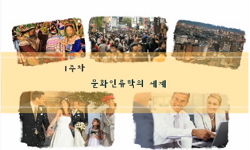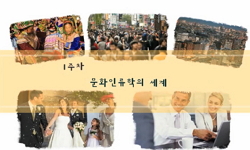전시 이념 ‘문화’는 국방부 정훈국, 문교부 국민사상연구원 주변의 관학적 지식 엘리트에 의해 형성된다. 그것은 한국전쟁의 대의명분을 찾는 과정에서 중요한 기호로 부상한다. 지식 엘...
http://chineseinput.net/에서 pinyin(병음)방식으로 중국어를 변환할 수 있습니다.
변환된 중국어를 복사하여 사용하시면 됩니다.
- 中文 을 입력하시려면 zhongwen을 입력하시고 space를누르시면됩니다.
- 北京 을 입력하시려면 beijing을 입력하시고 space를 누르시면 됩니다.
https://www.riss.kr/link?id=A107875350
- 저자
- 발행기관
- 학술지명
- 권호사항
-
발행연도
2021
-
작성언어
-
-
주제어
문화 ; 전시이념 ; 종군작가 ; 모랄 ; 문화보호법 ; 상징투쟁 ; culture ; wartime ideology ; the war writer ; moral ; the Cultural Protection Law ; symbolc struggle
-
KDC
800
-
등재정보
KCI등재
-
자료형태
학술저널
- 발행기관 URL
-
수록면
111-140(30쪽)
- DOI식별코드
- 제공처
-
0
상세조회 -
0
다운로드
부가정보
국문 초록 (Abstract)
전시 이념 ‘문화’는 국방부 정훈국, 문교부 국민사상연구원 주변의 관학적 지식 엘리트에 의해 형성된다. 그것은 한국전쟁의 대의명분을 찾는 과정에서 중요한 기호로 부상한다. 지식 엘리트에게 ‘문화’는 자본주의와 공산주의 양자택일의 문제가 아니라 외래문화에 응전해가면서 새롭게 창조해야 할 대상이었다. 이렇게 형성된 ‘문화’는 정훈 계통, 문총과 종군작가단의 문인에 의해 전파된다. 이 기획과 전파의 구도 안에는 이미 ‘지식의 위계’가 전제되어 있었고, ‘문화’라는 기호는 전시기 상징투쟁의 장을 연다. 문인들은 이념으로서 ‘문화’와 구체적 ‘생활’의 괴리를 느끼며 번민한다. 임긍재는 ‘생활’의 문제를 ‘모랄’의 차원으로 다룸으로써 이 괴리를 봉합하고자 한다. 그러나 결과적으로 그것은 문화를 규범적인 것으로 성역화하는 길로 이어진다. 전시기 ‘문화’는 점점 초월적 기표가 된다. 적치하에서 부역 혐의를 받은 문인은 ‘문화’를 정치와 무관한 반공·자유주의적 기호로 전용한다. 그러나 이 전용 자체가 지극히 정치적 행위였음은 물론이다. 전시기 많은 문인이 ‘문화’라는 기호로 상징투쟁에 참여함으로써 ‘정치’에 관여하고자 한다. 문화보호법을 둘러싼 혼란 속에서 그들은 ‘문화’를 일종의 ‘칭호’로서 획득하고자 경쟁한다. 또 여성의 풍기 문란과 부산의 퇴폐한 세태 등을 ‘문화’가 아닌 것으로 상대화함으로써 ‘규율하는 언어’로서 ‘문화’를 전유하고자 한다. 그러나 그들은 칭호와 상대화의 상징투쟁을 통해 지배계급의 원리를 재생산하는 데 부지불식간에 가담하게 된다.
다국어 초록 (Multilingual Abstract)
The wartime ideology “culture” is formed by the government-run intellectual elite around the Ministry of National Defense’s AFIED and the Ministry of Education’s National Institute of Thought. It becomes an important sign in the process of fin...
The wartime ideology “culture” is formed by the government-run intellectual elite around the Ministry of National Defense’s AFIED and the Ministry of Education’s National Institute of Thought. It becomes an important sign in the process of finding the justification of the Korean War. For the intellectual elite, “culture” was not a matter of either capitalism or communism, but of responding to foreign cultures and creating new ones. The culture formed like this is spread by the AFIED, and the War Writers’ Group. Within this composition of planning and propagation, “the hierarchy of knowledge” was already premised, and the sign of “culture” opens the stage for symbolic struggles during the wartime period. Writers suffer from the difference between wartime ideology “culture” and specific “life”. Lim Geung-jae seeks to bridge this gap by treating the issue of life as a “moral” dimension. But as a result it leads to a path to sanctifying culture as normative. The wartime ‘culture’ becomes an increasingly transcendent significant. Writers accused of collaboration under the enemy rule use “culture” as anti-communist and liberal symbols unrelated to politics. But of course, the appropriation itself was extremely political. Many wartime writers want to engage in “politics” by participating in symbolic struggles under the sign of “culture.” Amid the chaos surrounding the Cultural Protection Law, they compete to acquire ‘culture’ as a kind of ‘title’. In addition, the writers aims to transfer “culture” as a “discipline language” by relativizing women’s promiscuity and Busan’s decadent world as not “culture.” However, they unconsciously participated in reproducing the principles of the ruling class through a symbolic struggle for title and relativization.
동일학술지(권/호) 다른 논문
-
- 한민족문화학회
- 엄경희 ( Eum Kyoung-hee )
- 2021
- KCI등재
-
재일조선인 혐오의 계보와 인권운동 -고마쓰가와 사건, 김희로 사건, 히타치 투쟁을 중심으로-
- 한민족문화학회
- 이영호 ( Lee Young-ho )
- 2021
- KCI등재
-
1960~80년대 재일(在日) 종합문예지 『한양』 게재 문학작품의 서지적 연구
- 한민족문화학회
- 하상일 ( Ha Sang-il )
- 2021
- KCI등재
-
- 한민족문화학회
- 신광희 ( Shin Kwang-hee )
- 2021
- KCI등재





 KCI
KCI KISS
KISS






